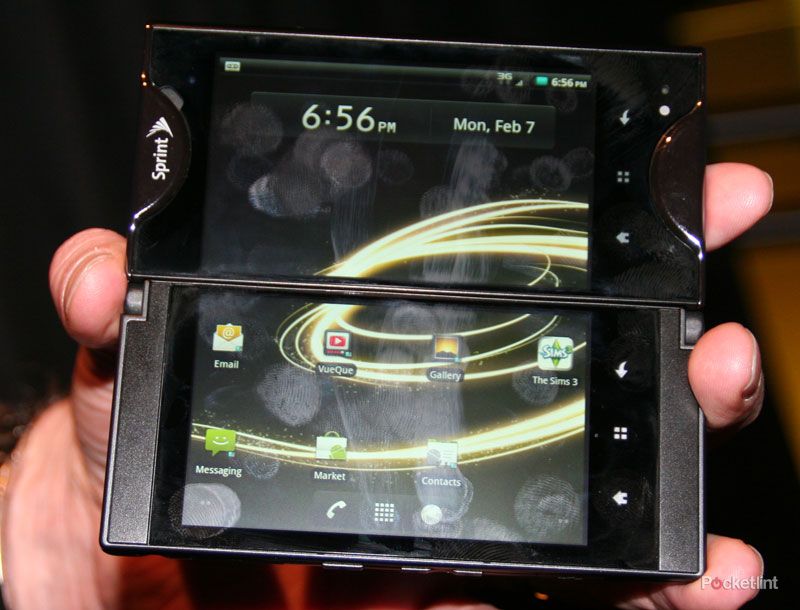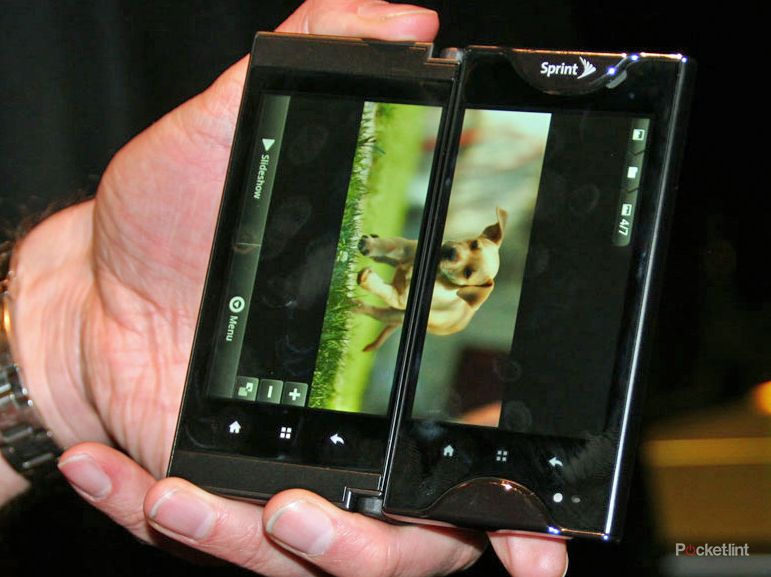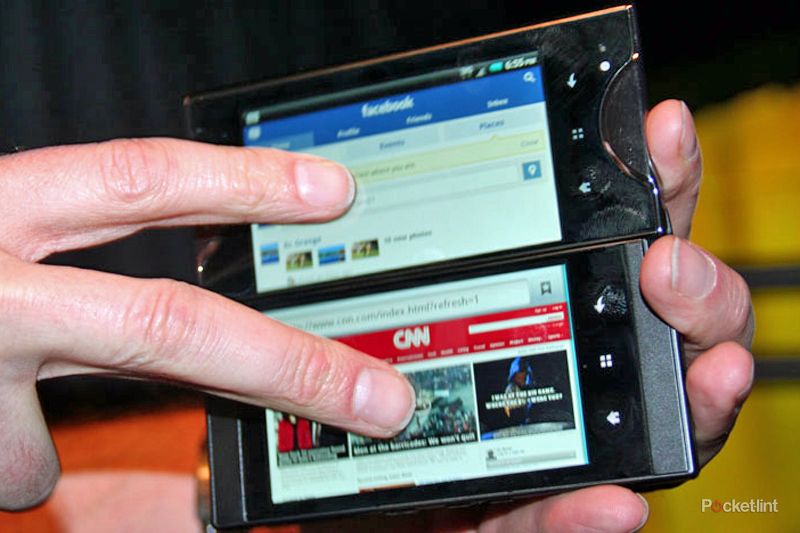At an exclusive event in New York City, Sprint and Kyocera announced the first dual-screen smartphone running on Android, the Echo. The Android-powered device is the first smartphone comprised of two 3.5-inch 800x480 touchscreen displays connected by a pivoting hinge. Both screens can operate independently for multitasking, or as one to form an oversized 4.7-inch (diagonally) integrated display.
Our quick take
Overall, the idea behind the Echo is a valid one. It takes the coolness of a tablet and combines it with the mobility of a smartphone. That said, Kyocera hardly has the reputation of being a super high quality hardware manufacturer.
The Echo is a 3G and Wi-Fi only phone, which means no WiMax. The phone is also capable of creating a mobile hotspot for up to five people, as standard in Android 2.2.
Available in the coming months for $199 after $100 rebate in the United States, the Echo might not be the be all and end all of mobile phones, but it is bound to spark copycats everywhere, hoping to cash in on Kyocera’s dual touchscreen creativity.

First Look
| FOR | AGAINST |
|---|---|
|
|
Kicking off the launch, illusionist David Blaine took the stage to demonstrate the magic of multitasking by smoking a cigar, drinking a glass of wine, and reading a book while submerged in a tank of water. Much like how Blaine took multitasking to the next level, it was clear that Sprint and Kyocera hoped to take mobile multitasking to the next level with what they call “simultasking”. Once Blaine’s giant fish tank was rolled off the stage, Sprint chief executive officer Dan Hesse and Kyocera’s Junzo Katsuki took over, prefacing their presentation by asking us to “Imagine being able to double your productivity every day”.
That’s the idea behind the Echo, a smartphone with “simultasking capabilities” that allows for emailing while Facebooking or surfing the Internet while waiting for incoming text messages. Previously, multitasking was defined as the ability to run and switch between multiple apps at the same time rather than actually utilising both at the exact same time. Backing up this multitasking is a 1GHz Qualcomm 8650 Snapdragon processor.
When Pocket-lint got our hands-on with the device, the first thing we noticed was Kyocera’s patent-pending pivot hinge technology, similar to the sort of hinge we saw on the HTC Desire Z. Completely closed, the Echo looks like any average rectangular smartphone. With a SideKick-esque slide to separate the two parts of the phone, users can open it to form a flat landscape or portrait display.
The screens can also be tilted to create the same bend as a laptop, like the Nintendo DS family, ideal for watching movies. Both screens display separately in 480 x 800 resolutions and together in 960 x 800.
The Echo treads a thin line between being a phone and being a small tablet. Considering that there is strong emphasis on the 4.7-inch diagonal diameter of the screen for singular media consumption like movies, the major question is why the Echo isn’t running on Android 3.0, the super fast tablet-only operating system? Instead, the phone is running on Android 2.2. Android enthusiasts argue this has something to do with the customisation that was required to modify the core applications to run on the dual screen system.
The coolest thing about simultasking is the phone’s ability to run apps, like messaging and email on each screen individually or across both the screens. The thin barrier between the screens provides a seamless track for swiping your finger or controlling the app across both screens. Some of the apps even provide users with a dual screen view of the application itself. For example, the email client provides a preview screen on one screen with the inbox content in the other. Currently the simultasking focus is on messaging, email, web browsing, phone, gallery, contacts and VueQue.
Games are another good example of apps that provide a dual screen display. In the demo, the Kyocera rep opened up the SIMS where he dressed his avatar from choices on the bottom screen, reflected on his character appearing on the top screen
Because of the custom work, the majority of third party apps can’t run in the dual screen mode and will instead take up the entire display for now. Sprint and Kyocera announced that they will be releasing the technology’s SDK so developers can continue to create apps around this new design.
To switch between apps, Kyocera has built-in a custom two-finger tap gesture to bring up the two screens simultaneously and switch between apps on each of the screens. The general pinch and scroll are also utilised.
Besides the simultasking feature and flexibility of the device itself, Sprint and Kyocera emphasised the battery pack included with the purchase. When you purchase the Echo, you will receive an additional battery that can be used to charge the current battery in your phone or hot-swap on-the-go. No exact details on how long the phone will last without a charge, but Sprint seemed to allude that it would be around a day of battery with heavy use of both screens. That said, we can’t help wondering if a phone marketing an extra battery as a main feature is making some sort of admission.
When it comes to the build, the Kyocera Echo is a tad clunky and the SideKick-like flip was kind of a turn off. The hardware does feature a rear-facing 5-megapixel and 720p video capture.
To recap
Overall, the idea behind the Echo is a valid one. It takes the coolness of a tablet and combines it with the mobility of a smartphone. That said, Kyocera hardly has the reputation of being a super high quality hardware manufacturer.


